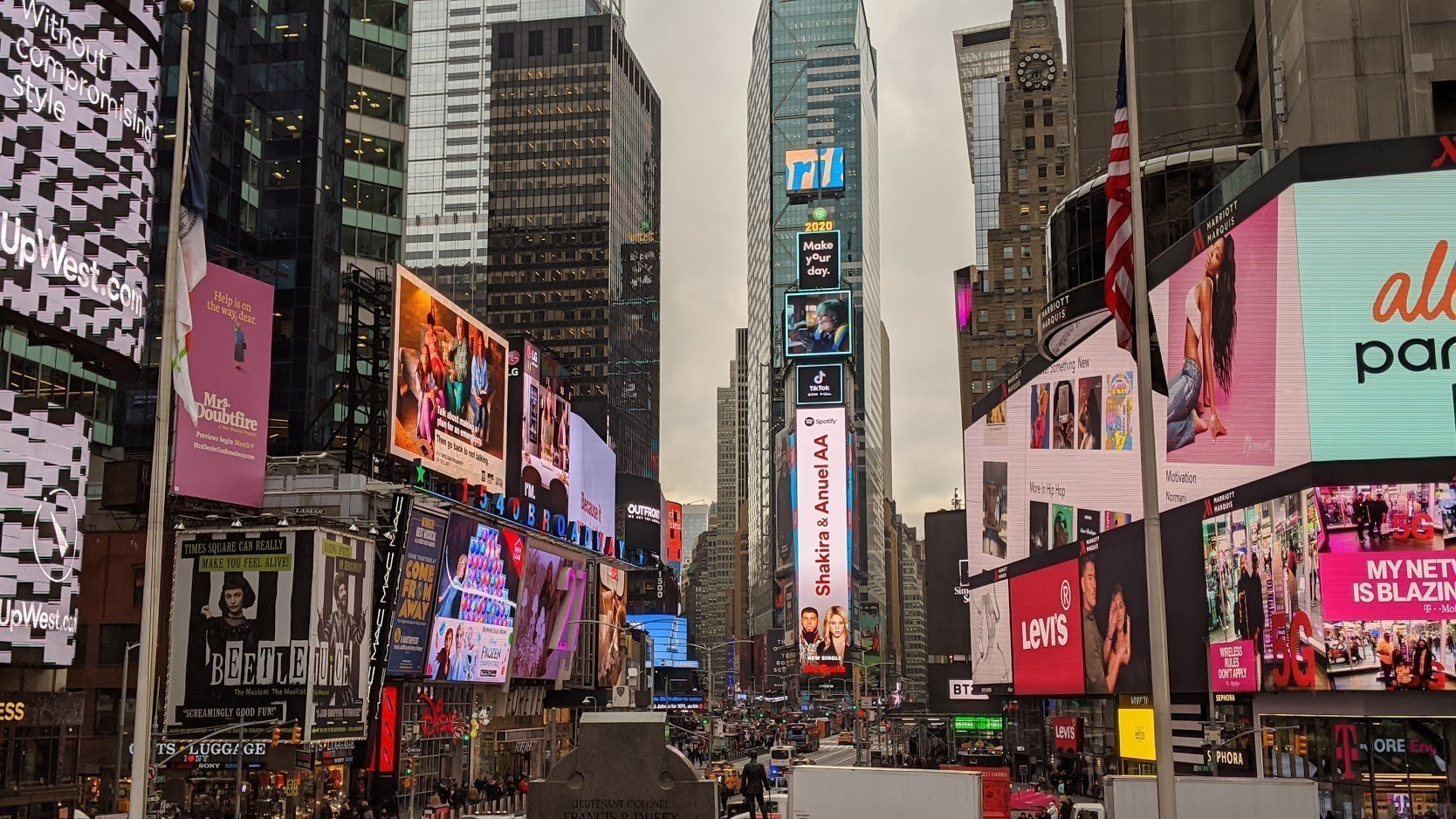Outdoor advertising continues to grow, as the Nielsen report 2019 for Germany shows. The overall growth of 13 percent is largely attributable to DooH. A trend that will probably continue in 2020 – despite the COVID19 pandemic.
Thanks to a strong start to the year 2020, the out-of-home sector in Germany is getting off with a black eye for the first half of the year due to the pandemic, according to Nielsen. While 2019 was still celebrated as an OoH record year, particularly due to strong growth in Digital out of Home, the corona crisis has this spring caused havoc to anyone in the industry.
Nielsen 2019 data still reflects last year’s unbroken growth dynamic of OoH, in which the dichotomy in the market continued. Total out-of home advertising increased by 13 percent to EUR 2.4 billion in 2019, this is almost on a par with traditional online advertising (EUR 2.6 billion), which declined in 2019 (-2.5 percent). However, around 75 percent of the growth in Out-of-Home is attributable to DooH. Static and digital Out-of-Home posted a total plus of EUR 238.6 million. The growth champion in the entire advertising market in absolute figures – TV and mobile are each only grew less than EUR 85m respectively.
Programmatic is driving force
According to the latest Nielsen figures, DooH recorded a plus of 41 percent – that is 212.5 million euros. In contrast, growth in classic outdoor advertising was only four percent (71.1 million Euro). The balance of power within the genre is shifting further towards DooH. The market share of digital outdoor advertising in the entire OoH market is now 30 percent, six percentage points above the 2018 average. “2019 was also the breakthrough for programmatic advertising in the industry. Numerous campaigns have shown what new opportunities programmatic opens up,“ diagnoses Frank Goldberg, Managing Director of the Digital Media Institute DMI.
Within the OoH genre, the individual media categories are developing completely differently: billboards, for example, are growing by 5.8 percent, but their share of the overall market is falling from 70 to 65 percent. Transport media / street furniture, on the other hand, are the big winner with a plus of 43 percent. Again DooH is the main driver with a above market share of 55 percent. After a weaker start to the year, Ad Retail also won again in 2019: 6.95 million euros from 2018 to 2019, and Ambient remained at a very low level in 2019 – despite a total gain of 8.85 million euros, which is entirely attributable to static media.
Hard times and good outlook 2020
Rarely has data published by Nielsen Germany been awaited with greater excitement than the January-June 2020 report on gross advertising expenditure. The shock caused by the pandemic lockdown and the standstill in public life was massive for the industry. However, in view of easing of restrictions, the media, like the entire economy, are hoping for a rapid recovery. For the period from January to June 2020, the Nielsen advertising trend does indeed point to a positive turnaround.
Although the gross sales of all media categories are still below the level of the previous year, the downward trend of recent months seems to have come to a halt. After April and May, in which the overall market declined by about 20 percent year-on-year, June showed clear signs of recovery with a decline of only about 12 percent compared to June 2019.
OoH grows with mobility
AOut-of-home sales in 2020 have bottomed out, as the sales trend of recent months indicates. The gross OoH-revenues from May to June 2020 showed a slight increase for the first time again with a plus of 1.65 percent. „Of course, we are still behind the results of 2019, especially as May and June are usually particularly strong months for OoH. But: The direction is right,“ emphasises Prof. Dr. Kai-Marcus Thäsler, Managing Director of the German Outdoor Advertising Association (FAW). „With the increasing revival of mobility, advertising in public spaces is also picking up. There are currently a number of new opportunities to draw consumers‘ attention to special offers, for example in the field of domestic tourism.
With its own mobility index, determined by data specialist Adsquare, FAW has analysed and documented the changes in mobility in public spaces since January 2020. Data is gathered in the most relevant environments for out-of-home – in the city centers and shopping areas, on main roads and at railway stations. Two periods are particularly striking when looking at the data: firstly, the slump triggered by the shutdown at the end of March. Secondly, the complete return to „normal mobility“ for almost all areas since the end of June. Even in the badly affected „Public Transport“ sector, public life at and in railway stations has now largely returned to normal.
The mobility index thus shows: out-of-home advertising is working again. As general mobility is almost back to pre-crisis level so is the potential for OoH sales. According to most experts, the DooH-industry can be confident that they can compensate the majority of lost business by the end of this year.
Get full access to all invidis yearbook articles – it’s free!
Download the industry bible for more analysis and market data. Secure your personal copy now – it’s free of charge.

